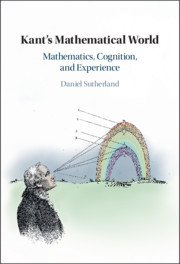Book contents
- Kant’s Mathematical World
- Kant’s Mathematical World
- Copyright page
- Dedication
- Contents
- Preface and Acknowledgments
- 1 Introduction
- Part I Mathematics, Magnitudes, and the Conditions of Experience
- Interlude The Greek Mathematical Tradition as Background to Kant
- 6 Euclid, the Euclidean Mathematical Tradition, and the Theory of Magnitudes
- Part II Kant’s Theory of Magnitudes, Intuition, and Measurement
- Bibliography
- Index
6 - Euclid, the Euclidean Mathematical Tradition, and the Theory of Magnitudes
from Interlude - The Greek Mathematical Tradition as Background to Kant
Published online by Cambridge University Press: 21 October 2021
- Kant’s Mathematical World
- Kant’s Mathematical World
- Copyright page
- Dedication
- Contents
- Preface and Acknowledgments
- 1 Introduction
- Part I Mathematics, Magnitudes, and the Conditions of Experience
- Interlude The Greek Mathematical Tradition as Background to Kant
- 6 Euclid, the Euclidean Mathematical Tradition, and the Theory of Magnitudes
- Part II Kant’s Theory of Magnitudes, Intuition, and Measurement
- Bibliography
- Index
Summary
The previous chapters established the centrality and importance of Kant’s theory of magnitudes. Before investigating Kant’s views more deeply, Chapter 6 provides critical background concerning the theory of magnitude, which is rooted in Euclid’s Elements. It describes the organization and deductive structure of the Elements to explain tensions between Euclid’s account of number and continuous spatial magnitude that persisted into the eighteenth century. It then explains the theory of proportions, in particular, the crucial definition of sameness of ratio. It also describes the mathematical nature of the continuous spatial magnitudes implicitly defined by that theory, including their homogeneity. Euclid also covers number and arithmetic and he regards numbers as collections of units. Much of the theory of proportions covers numbers as well as continuous spatial magnitudes, although Euclid gives numbers a separate treatment. This commonality inspired the search for a universal mathematics that covered continuous magnitudes more generally as well as number. The chapter traces the history and development of these themes in the Euclidean mathematical tradition, and describes its influence on three of Kant’s immediate predecessors: Wolff, Kästner, and Euler. It explains why these philosophers and mathematicians regarded mathematics as a science of magnitudes and their measurement.
Keywords
Information
- Type
- Chapter
- Information
- Kant's Mathematical WorldMathematics, Cognition, and Experience, pp. 163 - 194Publisher: Cambridge University PressPrint publication year: 2021
